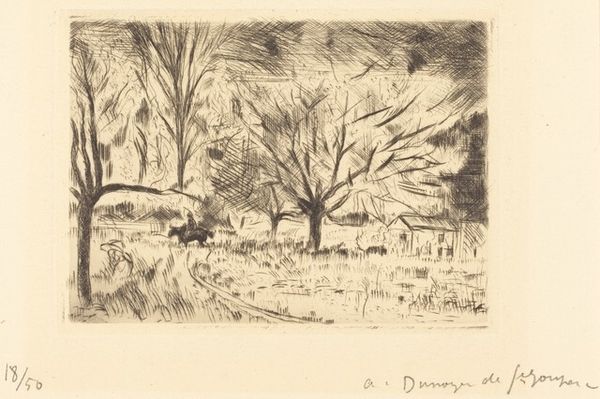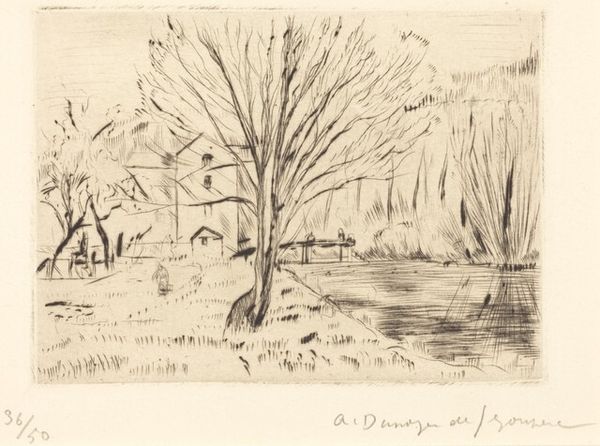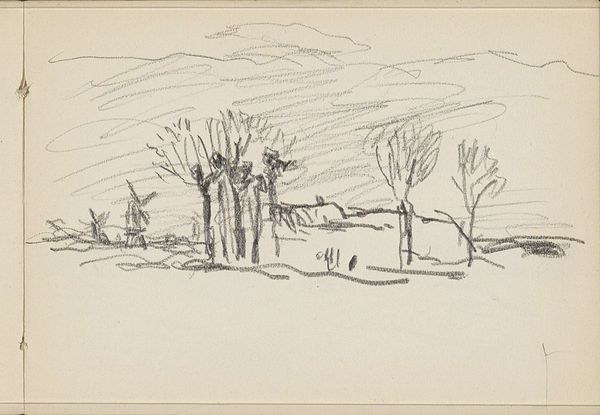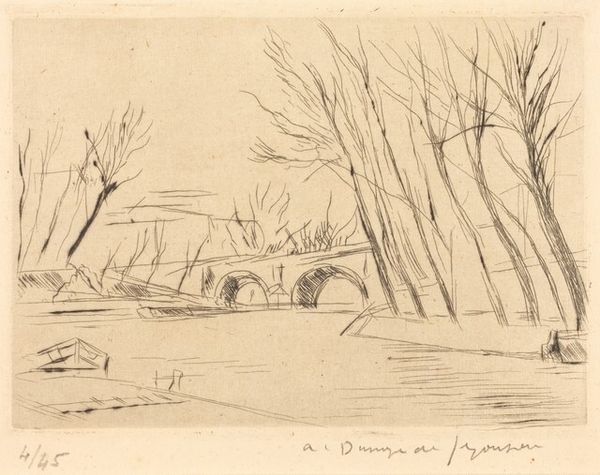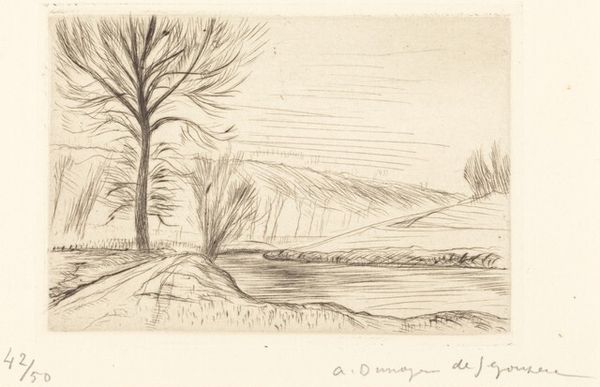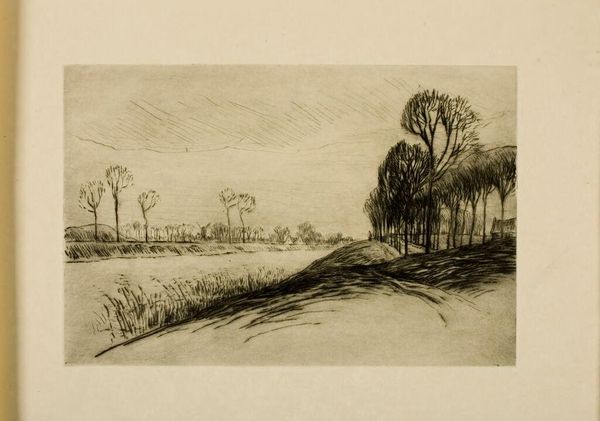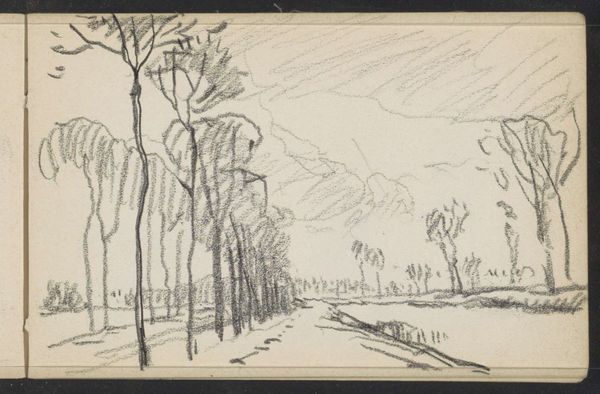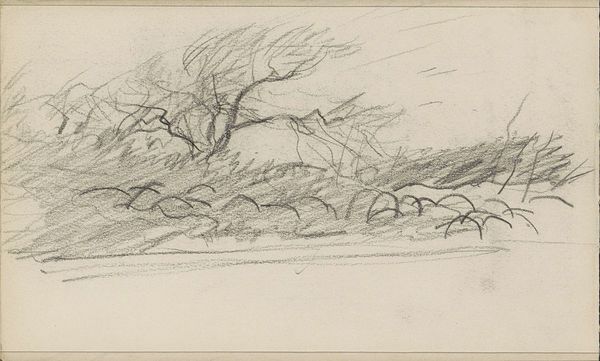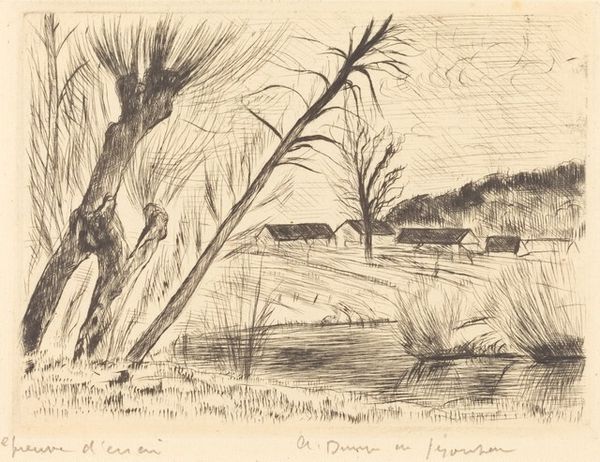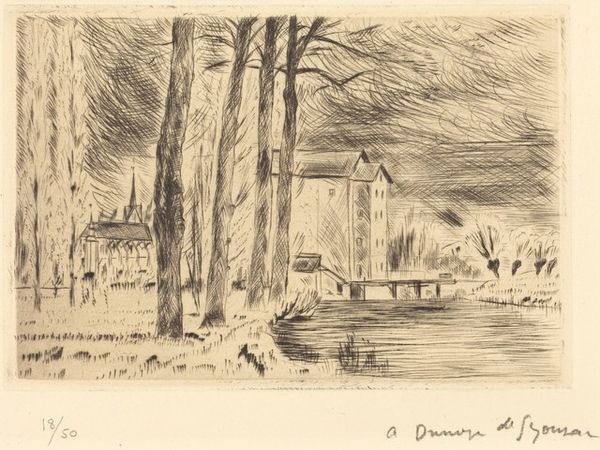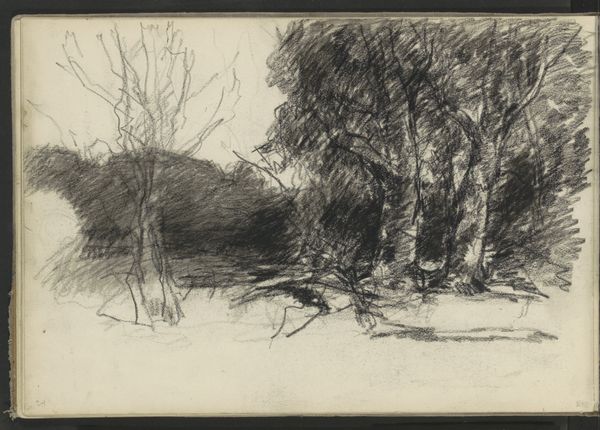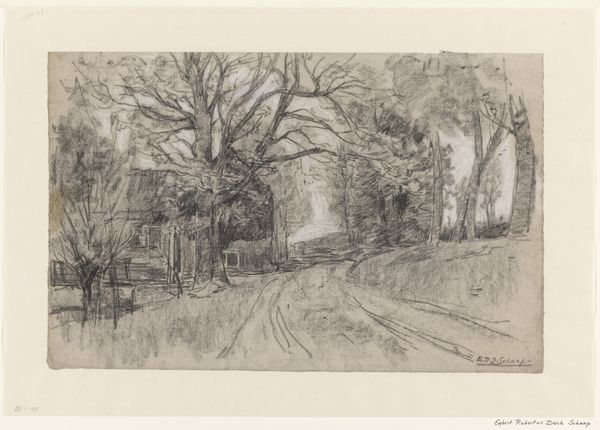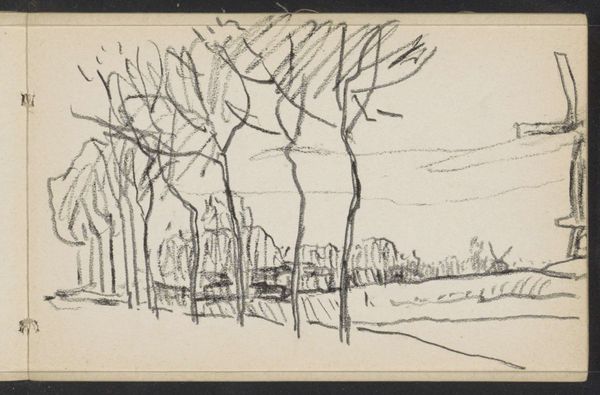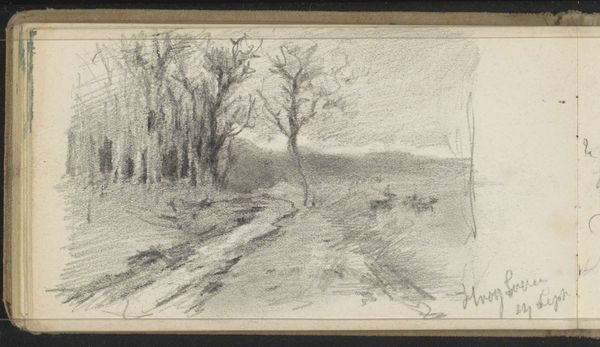
Copyright: National Gallery of Art: CC0 1.0
Editor: Here we have André Dunoyer de Segonzac's 1923 etching, "Apple Trees in Bloom." There's something almost melancholy about it, despite the title. It feels very sparse and wintry, even though you can tell the scene is set in spring. What do you make of it? Curator: Melancholy is a great word for it. Segonzac had such a knack for capturing the emotional weight of a scene, even in something as seemingly simple as blooming trees. Notice how he uses those frantic, swirling lines in the sky, almost mimicking the feeling of internal turmoil? It is as though the promise of spring is a poignant reminder of something lost. Editor: The line work is really striking, actually. So delicate, yet somehow also gives the landscape so much texture and movement. Was Segonzac always drawn to landscapes? Curator: That’s a wonderful observation. Line was everything to him; you can see how much emotion he coaxes from it. And yes, landscapes were a constant theme, especially rural France. He seemed drawn to the honest, unvarnished beauty of nature and ordinary life. I wonder, when you look at the house tucked into the trees, what story do you think it's telling? Editor: That makes sense given the mood of this etching. To me, the house offers a glimmer of hope and perseverance. Like a reminder that even amidst life's hardships, home endures. Curator: Exactly. It's that contrast, that interplay of light and shadow – both literally and figuratively – that makes Segonzac so compelling. His prints remind us to seek out and appreciate the simple truths, even when veiled in melancholy. He lets the feeling peek through. Editor: I never would have noticed this deeper message by simply looking at it. Thank you for the insight! I’m so much better equipped to discuss Segonzac now. Curator: My pleasure. It’s always rewarding to help someone truly *see*.
Comments
No comments
Be the first to comment and join the conversation on the ultimate creative platform.
